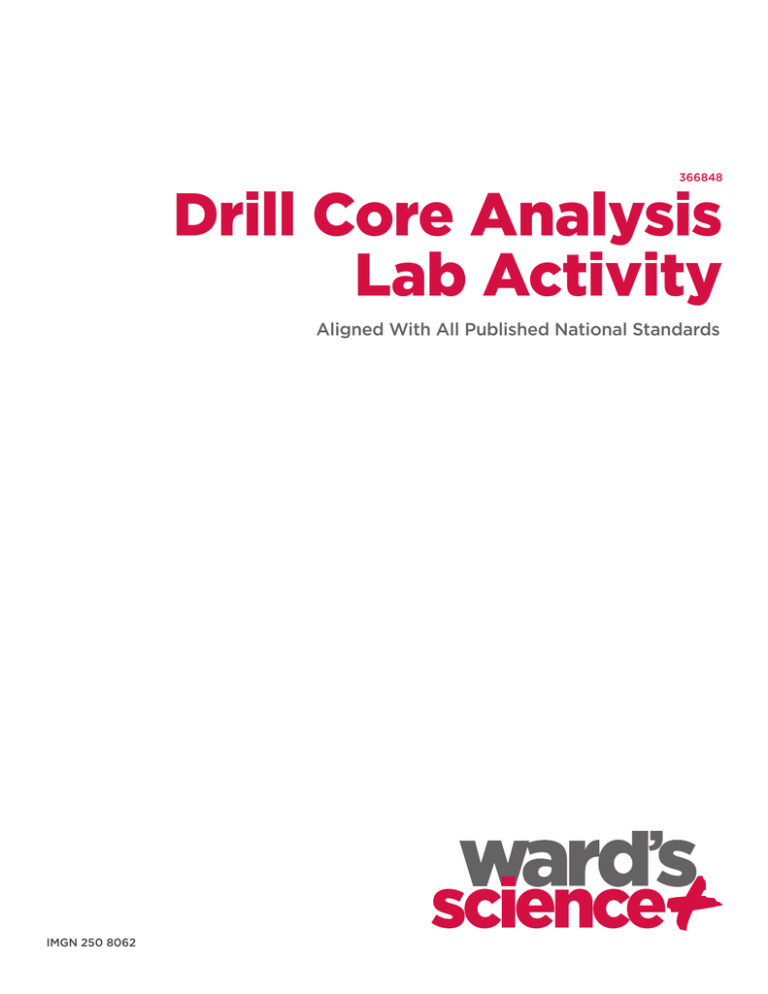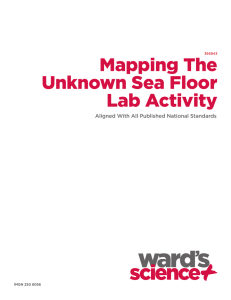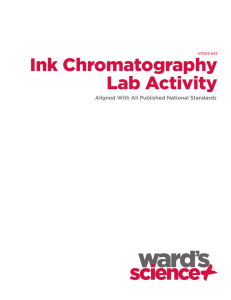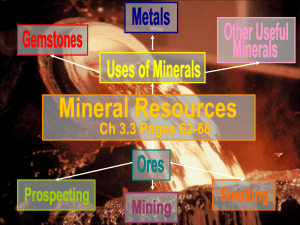
366848
Drill Core Analysis
Lab Activity
Aligned With All Published National Standards
IMGN 250 8062
table of contents
overview and materials list _______________________ 2
standards alignment ____________________________ 3
learning objectives ______________________________ 4
time requirement _______________________________ 4
safety precautions ______________________________ 5
vocabulary _____________________________________ 6
background ____________________________________ 7
pre-lab questions _______________________________ 8
pre-lab preparation _____________________________ 9
procedure _____________________________________ 10
results and analysis_____________________________ 11
assessment ____________________________________ 13
follow-up assessment ___________________________ 14
notes _________________________________________ 16
Ward’s in-house scientists are always on call to assist you
with your questions. Our expert can provide personal
solutions and product advice for your curriculum.
Email sciencehelp@vwr.com
or call 800-962-2660 to get started.
© 2013 WARD’S Science All Rights Reserved
Instruction IMGN 250-8062 - V. 7/13
Page 1
overview
This experiment demonstrates how mineralogists and mining engineers determine
the economic value of ore bodies, using sample drill cores. The core samples in this
kit may contain iron (as the minerals magnetite, hematite, and limonite), as well as
other non-ore minerals (like quartz, feldspar, gneiss, and limestone), which come
from the rock in which the ore body was found. The drill core samples in this kit are
from Virginia and North Carolina. The actual percentages of iron ore listed in Table
2 were determined by a geologist. After completing a series of steps listed on the
accompanying Student Guide, students should be able to determine the density
and percentage of iron (Fe), and ultimately, the market value of the ore body within
their core sample.
materials included:
•
•
•
5 Core samples
1 Graduated cylinder, 1000 mL
Instructions: Teacher’s Guide (this booklet) and Student Guide
materials not included:
•
•
Balances
Water
number of uses:
This demonstration can be successfully performed repeatedly with the materials
provided.
Visit wardsci.com for more science products.
Page 2
Call WARD’S at 1-800-962-2660 for Technical Assistance
KIT 366848
standards alignment
framework for K-12 science education © 2012
DIMENSION 2
Cross Cutting
Concepts
DIMENSION 1
Science and
Engineering
Practices
* The Dimension I practices listed below are called out as bold words throughout the activity.
U
Asking questions (for science)
and defining problems (for
engineering)
U
Use mathematics and computational
thinking
U
Developing and using models
U
Constructing explanations (for science)
and designing solutions (for engineering)
U
Planning and carrying out
investigations
U
Engaging in argument from evidence
U
Analyzing and interpreting data
U
Obtaining, evaluating, and
communicating information
Energy and matter:
Flows, cycles, and conservation
Patterns
Cause and effect:
Mechanism and explanation
U
Scale, proportion, and quantity
U
Structure and function
Stability and change
DIMENSION 3
Core
Concepts
Systems and system models
Discipline
Core Idea Focus
Earth and Space Science
ESS2: Earth’s Systems
Physical Science
PS1: Matter and Its Interactions
U Indicates standards covered in activity
next generation science standards © 2013
Middle School Standards Covered
MS.ESS2-2: Construct an explanation based on evidence for how geoscience processes have
changed Earth’s surface at varying time and spatial scales.
MS.ESS2-3: Analyze and interpret data on the distribution of fossils and rocks, continental
shapes, and seafloor structures to provide evidence of the past plate motions.
MS.PS1-1: Develop Models to describe the atomic composition of simple molecules and
extended structures.
(continued on next page)
© 2013 WARD’S Science All Rights Reserved
Instruction IMGN 250-8062 - V. 7/13
Page 3
standards and learning objectives
national science education standards © 1996
Content Standards (K-12)
Systems, order, and organization
U
Evidence, models, and explanation
U
Constancy, change, and measurement
U
Evolution and equilibrium
Form and Function
Earth and Space Science Standards Middle School
U
Earth’s History
Physical Science Standards Middle School
Properties and Changes of Properties in
U Matter
Physical Science Standards High School
U
Structure and Properties of Matter
U Indicates standards covered in activity
benchmarks for science literacy (AAAS, © 1993)
1. The Nature of Science
4. The Physical Setting
11. Common Themes
1B: Scientific Inquiry
4B: The Earth
11B: Models
activity objectives:
•
Determine the mass, volume, and density of a core sample.
•
Plot a graph to determine the percent of iron for the core sample.
•
Determine the volume, mass, total iron, and market value of the iron (Fe) ore body from
which this core sample came.
time requirement:
This activity can be completed in approximately one 45 minute class period.
Page 4
Call WARD’S at 1-800-962-2660 for Technical Assistance
KIT 366848
safety precautions
general safety:
•
•
The teacher should 1) be familiar with safety practices and
regulations in his/her school (district and state) and 2)
know what needs to be treated as hazardous waste and
how to properly dispose of non-hazardous chemicals or
biological material.
Consider establishing a safety contract that students and
their parents must read and sign. This is a good way to
identify students with allergies (e.g., latex) so that you (and
they) will be reminded of specific lab materials that may
pose risks to individuals.
•
Require students to remove all dangling jewelry and tie
back long hair before they begin.
•
Remind students to read all instructions before starting the
lab activities, and to ask questions about safety and safe
laboratory procedures.
at the end of the lab:
•
Remind students to wash their hands thoroughly with
soap and water before leaving the laboratory.
© 2013 WARD’S Science All Rights Reserved
Instruction IMGN 250-8062 - V. 7/13
note
teacher
notes
_________________
_________________
_________________
_________________
_________________
_________________
_________________
_________________
_________________
_________________
_________________
_________________
_________________
_________________
_________________
_________________
_________________
_________________
_________________
_________________
_________________
_________________
Page 5
8FTU)FOSJFUUB3Et10#PYt3PDIFTUFS/:tQtGtXBSETDJDPN






